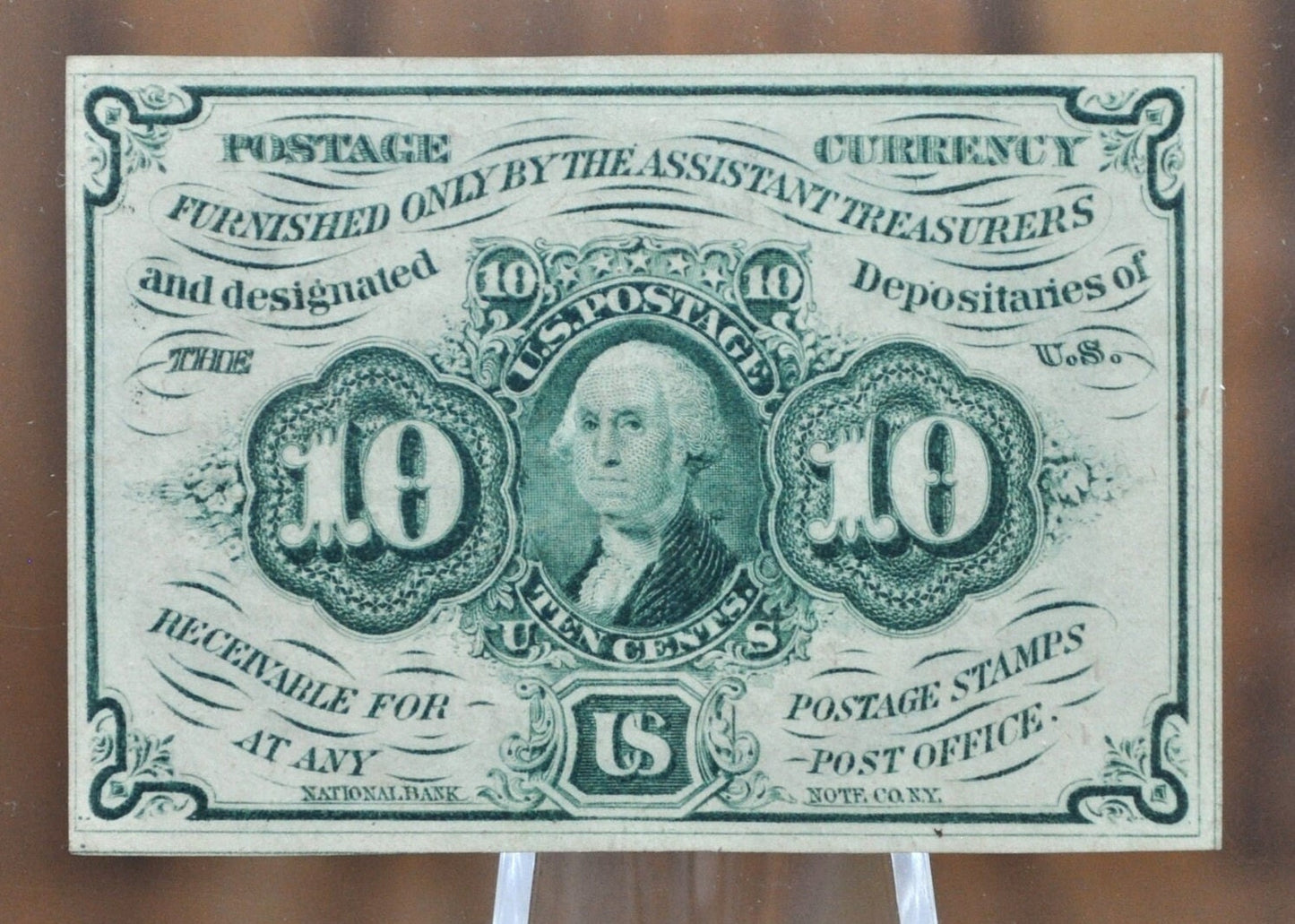1st Issue 10 Cent Fractional Note Fr#1242- Choice Uncirculated - 1862 10C Fractional Currency, First Issue 10 Cent Fractional, Civil War Era
1st Issue 10 Cent Fractional Note Fr#1242- Choice Uncirculated - 1862 10C Fractional Currency, First Issue 10 Cent Fractional, Civil War Era
This listing is for the photographed 1st Issue 10 Cent Fractional Currency paper note. The best condition I have ever seen for this note in all my years of business. Great Color. Crisp Note. No pinholes. No signs whatsoever of wear or use.
- Shipped in a protective currency sleeve. Rigid packaging to prevent damage in transit. Our shipping is careful, safe, and fast.
- Friedberg Number 1242
- Straight Edges, With Monogram
- Great Color. Crisp Note. No pinholes.
Very cool note.
The Civil War economy catalyzed a shortage of United States coinage; gold and silver coins were hoarded given their intrinsic value relative to irredeemable paper currency at the time. In late 1861, to help finance the Civil War, the U.S. government borrowed gold coin from New York City banks in exchange for Seven-thirties treasury notes and the New York banks sold them to the public for gold to repay the loan.
In December 1861, the Trent Affair shook public confidence with the threat of war on a second front. The United States Department of the Treasury suspended specie payments and banks in New York City stopped redeeming paper money for gold and silver. In the absence of gold and silver coin, the premium for specie began to devalue paper currency. After the New York banks suspended specie payments (quickly followed by Boston and Philadelphia) the premium on gold rose from 1–3% over paper in early January 1862 to 9% over paper in June 1862, by which time one paper dollar was worth 91.69 cents in gold. This fueled currency speculation and created significant disruption across businesses and trade. Alternate methods of providing small change included the reintroduction of Spanish quarter dollars in Philadelphia, cutting dollar bills in quarters or halves, refusing to provide change (without charging a premium for providing silver coins), or the issuance of locally issued shinplasters (i.e., those issued by businesses or local municipalities), which was forbidden by law in many states.
Treasurer of the United States Francis E. Spinner has been credited with finding the solution to the shortage of coinage: he created postage currency (which led into the use of fractional currency). Postage (or postal) currency was the first of five issues of US Post Office fractional paper money printed in 5-cent, 10-cent, 25-cent, and 50-cent denominations and issued from 21 August 1862 through 27 May 1863. Spinner proposed using postage stamps, affixed to Treasury paper, with his signature on the bottom. Based on this initiative, Congress supported a temporary solution involving fractional currency and on 17 July 1862 President Lincoln signed the Postage Currency Bill into law. The intent, however, was not that stamps should be a circulating currency.
1st Issue 10 Cent Fractional Note Fr#1242- Choice Uncirculated - 1862 10C Fractional Currency, First Issue 10 Cent Fractional, Civil War Era
1862 10 Cent Note / 1862 Ten Cent Note / Civil War Note / First Issue Fractional Currency / 1st Issue Fractional Currency / George Washington Fractional Currency
Fr#1242, Fr1242, Fr1243, Fr#1244, Friedberg Number 1241, Friedberg Number 1242, Friedberg Number 1243, Friedberg Number 1244
Teslim alım stok durumu yüklenemedi










